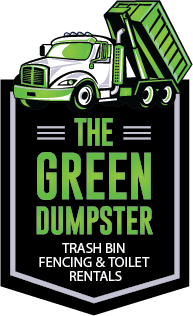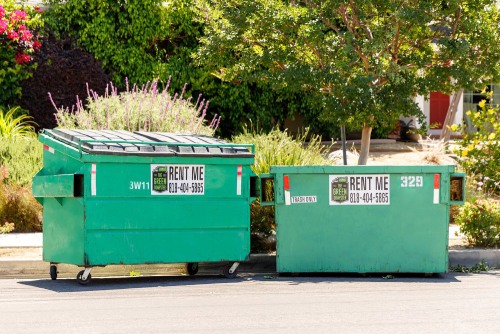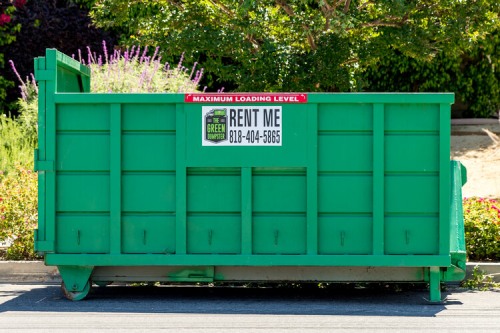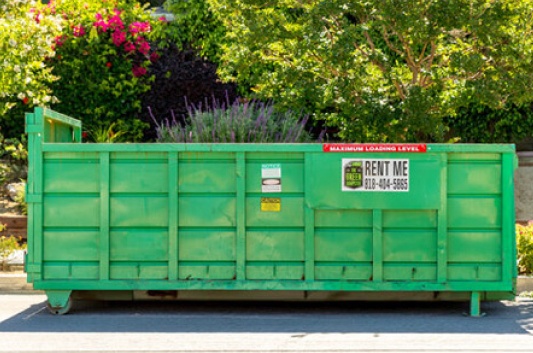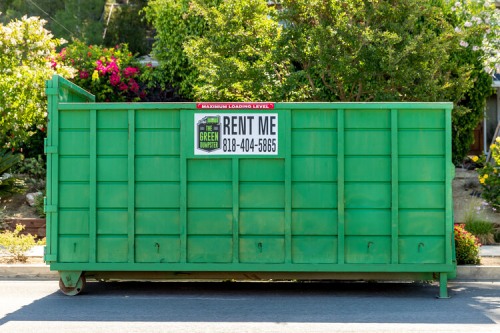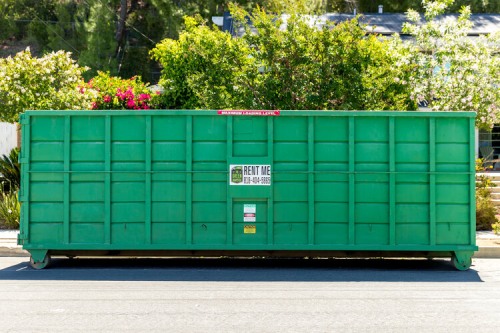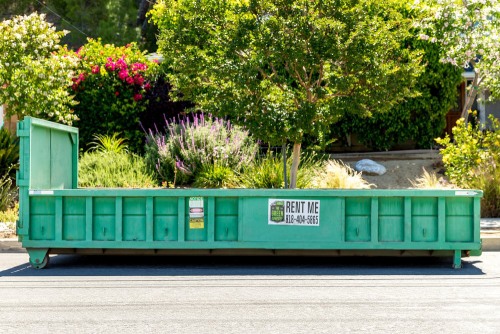#1 Dumpster rental Service in San Fernando Valley!
The Green Dumpster stands as the premier choice for dumpster rentals in Los Angeles and the wider San Fernando Valley area! Entrust your waste management needs to us and experience hassle-free service at its best. We provide an extensive selection of dumpster sizes to accommodate any project you have in mind.
- Family-owned
- Competitive Pricing
- Professional Services
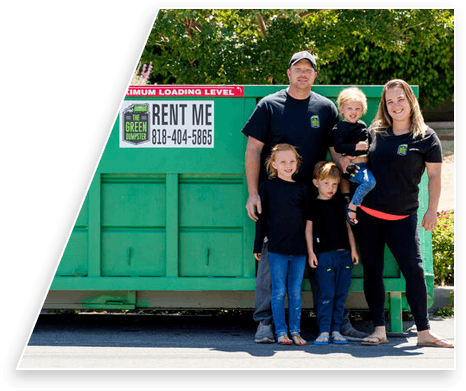
Dumpster Sizes for Every Project
Dimensions: 6’ long, 4′ wide, 4′ tall
- Perfect for small cleanouts
- Fits most driveways
- For general trash (no heavy materials)
- Accepts light construction waste
- 1-week rental period
Dimensions: 10’ long, 6′ wide, 4′ tall
- Ideal for medium projects
- Fits most parking spaces
- Construction, clean-outs, light brush
- Holds furniture like mattresses
- Accommodates disassembled/small items
Dimensions: 14’ long, 8′ wide, 4′ tall
- Suitable for large projects
- Handles bulkier event trash
- Fits bulky furniture
- Accommodates disassembled/large items
- Holds heavy materials
Dimensions: 15’ long, 8′ wide, 6′ tall* or 20′ long, 8′ wide, 3.5′ tall
- Largest size for big projects Ideal for large event trash
- Holds huge items Fits disassembled/bulky items
Dimensions: 22’ long, 8′ wide, 6′ tall
- Largest size for major projects
- Suitable for large event trash
- Ideal for bulky items
- Accommodates disassembled/large items
Dimensions: 18’ long, 8′ wide, 2′ tall
- Ideal for small projects
- Fits in most driveways
- Great for construction cleanup
- Holds oversized items if broken down
Dumpster Rentals For Any Project
Reviews for our dumpster rentals
in san fernando valley
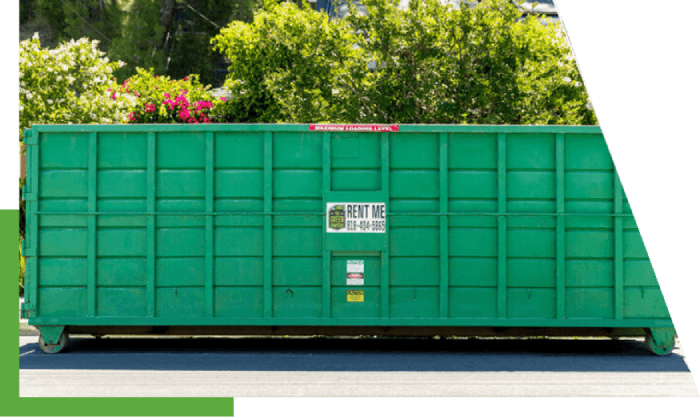
Renovation to Restoration: Dumpster Uses

- Garage Cleanouts
- Estate Cleanouts
- Community Events
- Moving
- Renovation & Demolition
- Landscape and Yard Waste
- Brush Clearing
- Service Projects
- Spring Cleaning
Recycling and other PLANET-FRIENDLY alternatives To Trashing
At the Green Dumpster we care about the impact trash has upon our planet. While we recycle whenever possible, we have found that either reusing, or gifting an item earmarked for disposal is a more effective way to reduce waste.
Rather than throw away perfectly good items, drop them off at your local donation spot, or connect via social media to others in your area who need or want the item you are discarding.
Explore reuse and gifting options near you.
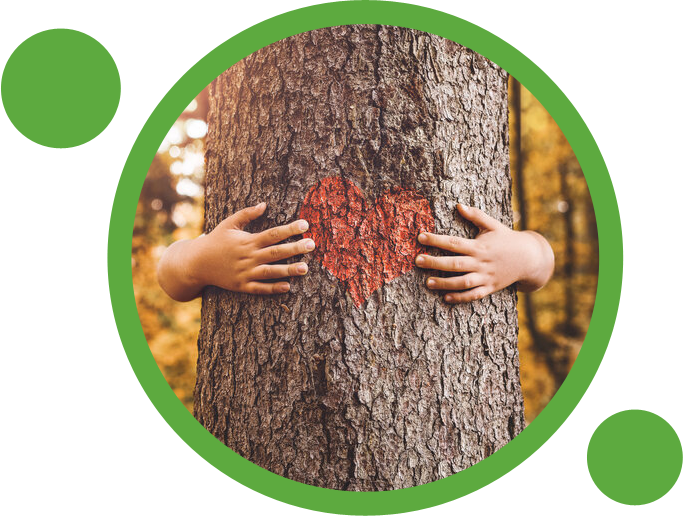
The Best Dumpster Rental In San Fernando Valley
With three generations of expertise in the dumpster rental business, The Green Dumpster is deeply committed to providing outstanding service. From your initial inquiry to the final collection of your rented bin, we’re here to ensure a seamless experience.

5 star Service
We are a full-service dumpster bin rental company proudly serving San Fernando Valley. We promise you will be than satisfied with our dumpsters.

Planet Friendly
The local environment is one of our highest priorities and we will always do everything we can to protect the environment of San Fernando Valley.

Rush Delivery Available
Time is money. We offer same-day delivery and pickup and can even deliver your dumpster on Saturdays. *Restrictions apply

Reliable Service
When you choose The Green Dumpster, you can be confident that you're selecting a reliable and trustworthy company.

5 Star Reputation
The Green Dumpster team is passionate about customer service and will do whatever it takes to ensure you're happy.

Fast Service
The Green Dumpster is the fastest dumpster rental company in San Fernando Valley. We offer same-day delivery and pickup and on many occasions
Quality Dumpster Rental in San Fernando Valley
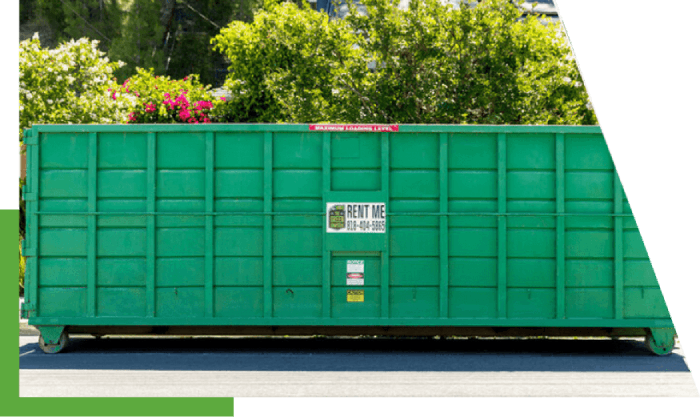

The Green Dumpster in San Fernando Valley provides a range of dumpster sizes for any project. Our selection includes 3, 9, 16, 25, and 40 cubic yard dumpsters, as well as a 10 cubic yard low boy, ensuring we have the ideal bin for anything from garage cleanouts to full home renovations!
Find a Dumpster Rental Near You
Frequently Asked Questions
How much does it cost to rent a dumpster?
The cost of renting a dumpster varies based on your specific location and the details of your project. Approximately, prices start at $205 for a smaller dumpster with an 800 lb weight limit. For larger projects requiring more substantial waste disposal, a 40 cubic yard dumpster is available for around $700, accommodating up to 4 tons of debris.
Remember, these prices are approximate and can change depending on your area and the duration of the rental, so it’s best to contact us directly.
What size dumpsters can I rent?
We offer a variety of sizes to suit any project, including 3, 9, 16, 25, and 40 cubic yard dumpsters, along with a specialized 10 cubic yard “low boy” for heavy materials like concrete and dirt.
What happens if I exceed the weight limit?
Exceeding the weight limit can lead to additional fees. It’s important to estimate your waste weight accurately and choose a dumpster size with a suitable weight limit to avoid extra charges.
Can I extend the rental period, and how much does it cost?
Rental period extensions are possible but come with additional charges that vary depending on the duration of the extension. Contact us directly to discuss your needs and any associated costs.
How To Rent a Dumpster From The Green Dumpster?
Simply contact us to discuss your project’s needs, select the appropriate dumpster size, and schedule delivery. We’ll guide you through the process, including selecting the right size, understanding pricing, and arranging pickup.
How does The Green Dumpster handle waste disposal?
We ensure that your waste is disposed of responsibly, following local regulations and environmental best practices. We sort the waste for recycling when possible, aiming to minimize environmental impact.
Why Choose Our Dumpster Rental Services
Proudly serving San Fernando Valley, The Green Dumpster provides a range of dumpster sizes to support your projects. Whether it’s a garage cleanout or a home renovation, we have the perfect bin for you!
Contact Us And Get A Free Quote

